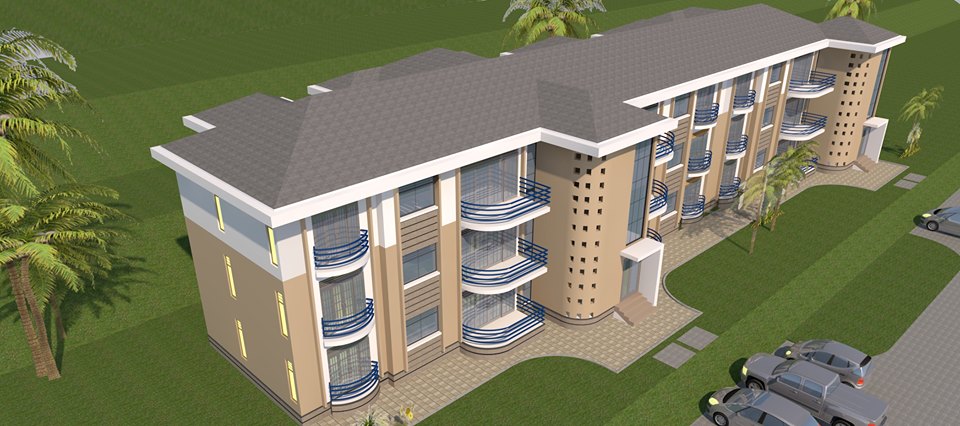
The role of commercial banks and real estate developers are changing to create affordable housing for Ugandans
COMMENT | Jackson Emanzi | Uganda’s population is projected to grow from an estimated 37 million people today to 41.2 million by 2020 (Uganda Bureau of Statistics). Under Goal 11 of the United Nations Sustainable Development Goals (SDGs), all these people are entitled to adequate, safe, and affordable housing. Unfortunately, Uganda already currently has a housing deficit close to 1.2 million units.
Kampala District alone has a staggering housing deficit of over 200,000 units. To compound this concern, the Uganda Vision 2040 report projects our population at 61.3 million by 2040 with almost 60% of the population living in urban areas. This rapid urbanisation is bound to put pressure on housing delivery systems which are currently mainly informal or reliant on the state. The inability of supply to keep up with the housing demand results in increased areas of informal housing, overcrowding, and slums.
Today, banks and housing developers are looking at ways to create affordable housing options to meet the high demand from this growing population. The goal of providing affordable housing can be achieved by bridging the gap that has existed between access to capital and execution capability. It is on this premise that banks have started to reduce mortgage rates to boost the housing sector.
Some of the banks, including Stanbic Bank, are working to strengthen partnerships with the developers in a bid to reduce the overall cost of borrowing. The banks are, for example, subsidising some expenses such as the cost of valuation of properties. This will be a great benefit for the customer who is looking for value and a cost effective financing option for their housing needs.
Adjusting to meet the demand
As urbanization gains pace, the need for affordable housing has become acute. The kind of houses currently on the market cost way more than the average middle income level Ugandan can afford. To address this concern, several development partners have adjusted their operations to meet this demand. They are putting up affordable housing units for the middle-income earners. The new projects are now majorly town flats on condominium plans, semidetached bungalows in closed gate communities, and standalone bungalows in the outskirts of Kampala.
This new development now implies that one can get a town flat for as low as Shs65 million and if they have stable monthly income they can as well qualify for a mortgage to enable them to purchase the house. There is, however, still need for developers to liaise/partner with the local authorities and government to jointly provide social infrastructure such as roads, social amenities like piped water and electricity in areas further away from the city which will make these areas attractive and accessible to the target market.
Banks lower interest rates to make mortgages affordable
Banks have already embarked on the journey to make mortgage financing accessible and affordable to middle and lower income households by lowering interest rates in line with the drop in prime lending rates. As an example, Stanbic Bank has changed lending parameters to also support customers with different income levels and the self-employed or business people. Another big part of this is starting the journey to educate the public; especially those in the middleincome bracket, on the advantages of mortgage financing.
Many people are not aware of the different options available to facilitate ownership of property.
That is why banks like Stanbic have partnered with several developers and platforms such as Jumia House to provide free information on mortgage rates. It is hoped that this will go a long way in changing the misconception on how mortgage loans work, who can qualify, and how to acquire one. And due to market demand, the Stanbic Bank has also introduced land loans to cater for those intending to acquire land for new and additional developments.
Jackson Emanzi is the Head of Home Loans, Stanbic Bank Uganda
 The Independent Uganda: You get the Truth we Pay the Price
The Independent Uganda: You get the Truth we Pay the Price



When you write an article like this without giving figures where they are applicable, it is like serving someone bones without any meat on them.
Finance and business is all about figures, just like an economics student can not write an essay on demand and supply without including the odd graph to back up their presentation.
So banks have lowered rates from what to what, what is the average income and what is the present cost of an average property.
And at the present rate of interest what would the average repayments be.
In the UK, only last week the Bank of England raised its lending rate from .25% to .50%, I think, but already it has been worked out what impact that will have on peoples mortgages.
So please do not just write as if you are writing a letter to your girlfriend, give us facts and figures please.
The cost of housing is influenced by several factors, and interest rates are but only one of them. It is infact possible for interest rates to come down and for the cost of housing to go up.
Some of the factors that influence the cost or affordability of housing are ; the cost of land, the cost of building materials, the earnings and the disposable income, rates of interest, length of the repayment period, the type of loan eg interest only loans and the combination all of which are influenced by different factors .
The role the government plays, ie government policy is very important, eg taxes on building materials and building activities.
Take the example of a housing unit costing 50m, with a person earning 5m per month , with interest rate at 20% and a repayment period of 10 years. The interest alone would be 10m per annum , with capital repayment averaging 5m per year.This would be a repayment of 15m per year representing 25% of ones earnings.
If the cost of the unit came down to 40m, the earnings went up to 7.5m, the interest rate down to 15% and the repayment period to 20 years, the net payment would be 8m representing about 9%.
It would even be more affordable, initially at least if the loan was an interest only say for the first 5 years, then the 6m per year, which would only be about 7% of the income.
So its not only the rate of interest that matters.
Great submission Mr. Ejakait. They say banks give you an umbrella in the dry season and take it away when it starts raining!!!! The loans officer is mean on figures and facts to enable Ugandans make informed decisions. I want to venture into development of housing units or real estates, how would my company benefit from such mortgage reductions and provisions?